Building a Basic CRUD Application with Polymer: A Comprehensive Walkthrough
In this guide, you'll learn how to develop a fully functional CRUD (create, read, update, delete) application using Polymer.
This walkthrough demonstrates how to perform essential operations for managing and modifying data. You’ll begin by setting up a Back4app project, titled Basic-CRUD-App-Polymer, which will serve as the backend for your application.
Following this, you will craft a scalable data model by outlining precise collections and fields—either manually or with the assistance of the Back4app AI Agent—to ensure your database is optimized for CRUD operations.
Next, you’ll leverage the Back4app Admin App, a user-friendly drag-and-drop management interface, to streamline your data operations.
Finally, you will integrate your Polymer frontend with Back4app using REST/GraphQL APIs while reinforcing backend security with sophisticated access controls.
By the end of this tutorial, you will have constructed a production-ready web application that supports core CRUD operations and includes user authentication and robust data management features.
- Develop a CRUD application that efficiently manages data with a reliable backend.
- Design a scalable backend and connect it with a Polymer-based frontend.
- Utilize a drag-and-drop admin interface (Back4app Admin App) to facilitate data operations.
- Deploy your application using modern techniques including containerization with Docker.
Before starting, ensure you have:
- A Polymer development setup. Use Polymer CLI or similar tools and verify that Node.js (v14 or later) is installed.
- A basic grasp of JavaScript, Polymer, and REST APIs. You can refer to the Polymer documentation for more details.
- Access your Back4app account.
- Select the “New App” option from your dashboard.
- Assign the project name: Basic-CRUD-App-Polymer and follow the instructions to finalize project creation.
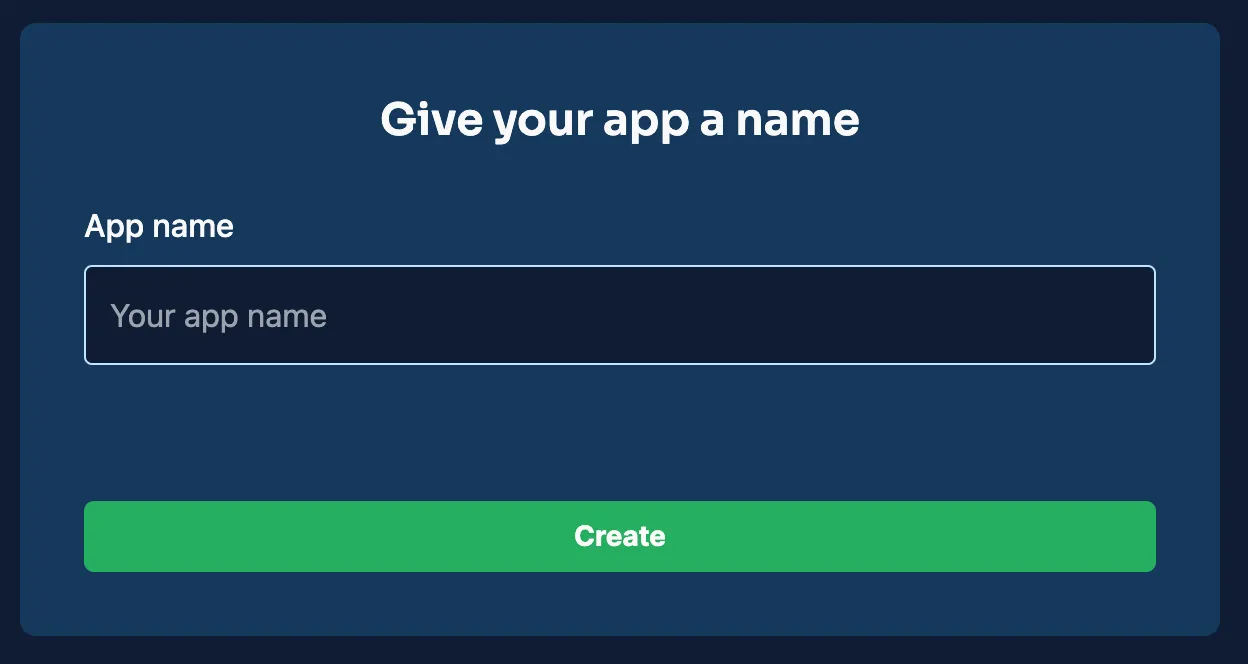
After completing these steps, your project will be visible on the Back4app dashboard, forming the backbone for your backend configuration.
For this CRUD app, several collections are needed. Below are example collections along with fields and their respective types, which will help you design a robust database schema capable of handling CRUD operations.
Field | Type | Description |
|---|---|---|
_id | ObjectId | Auto-generated primary key. |
title | String | The item’s title. |
description | String | A short description of the item. |
created_at | Date | Timestamp marking item creation. |
updated_at | Date | Timestamp for the most recent update. |
Field | Type | Details |
|---|---|---|
_id | ObjectId | Auto-generated primary key. |
username | String | Unique identifier for the user. |
String | Unique email address. | |
password_hash | String | Encrypted password for security. |
created_at | Date | Timestamp when the account was created. |
updated_at | Date | Timestamp for the latest account update. |
You can manually create these collections on the Back4app dashboard by establishing new classes and adding corresponding columns.
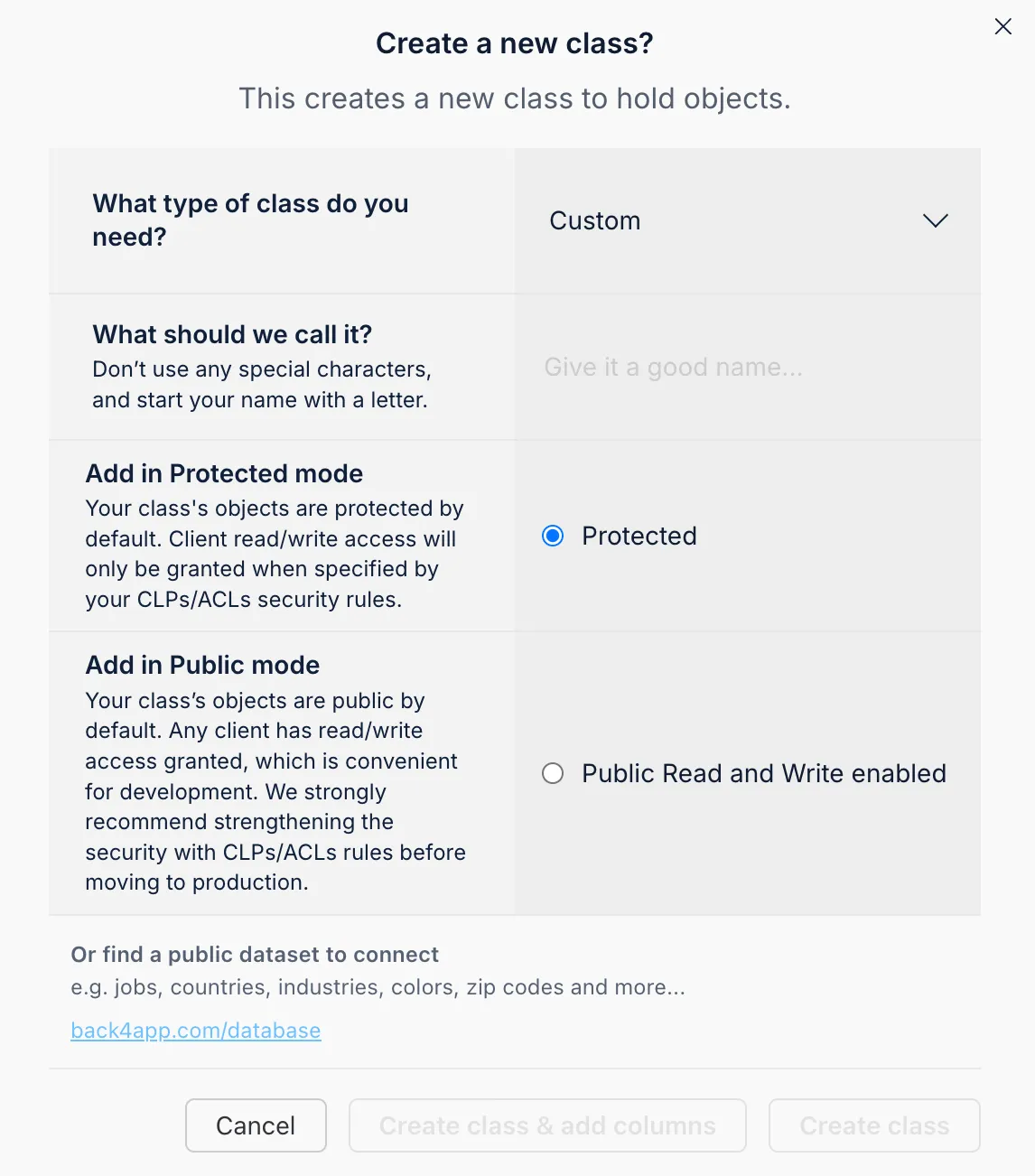
Easily add new fields by choosing a data type, naming the field, and specifying any default values or required parameters.
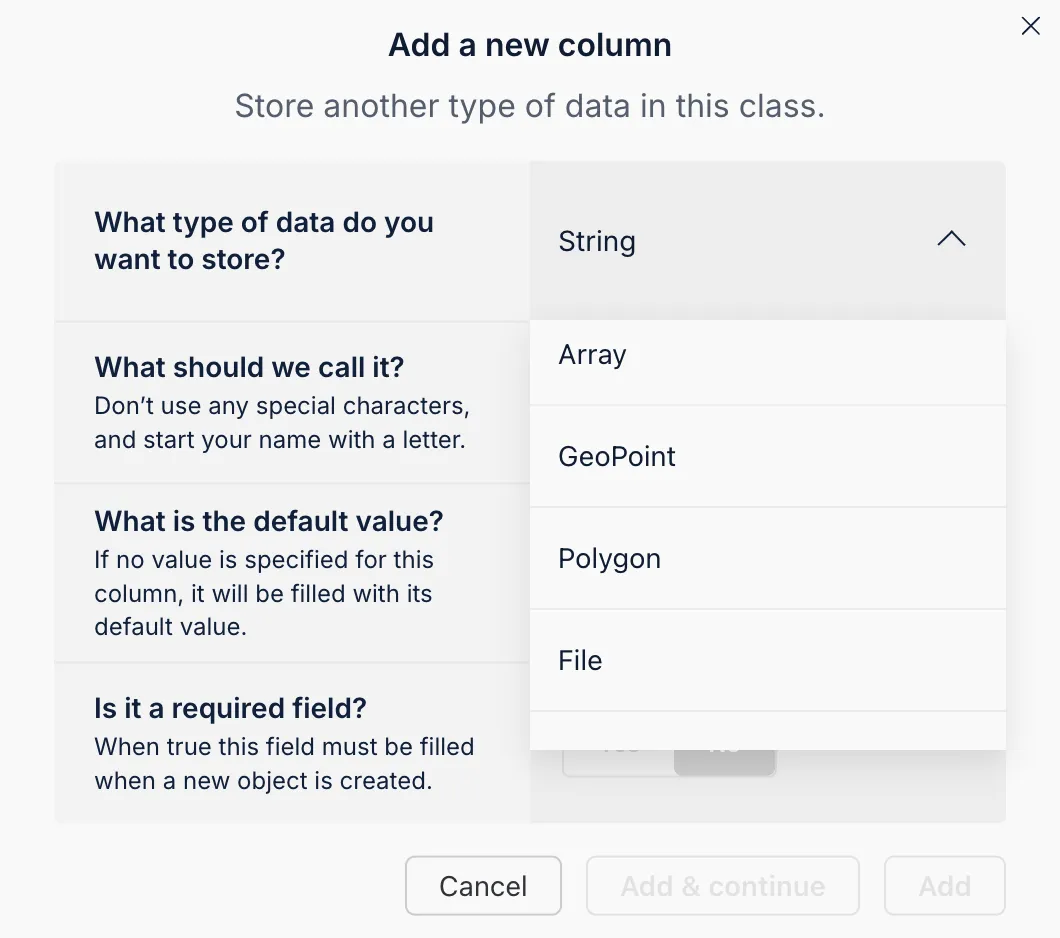
The Back4app AI Agent, accessible from your dashboard, automatically generates a database schema based on a prompt detailing your collections and fields. This feature is a huge time saver, ensuring your backend is precisely tailored for CRUD operations.
- Launch the AI Agent: Access it via your project settings or main menu in the Back4app dashboard.
- Input Your Schema Details: Provide a descriptive prompt that lists the collections and fields you require.
- Review and Confirm: After the AI Agent processes your request, review the generated schema and apply it to your project.
Using the AI Agent ensures your schema is both consistent and optimized for your application’s requirements.
The Back4app Admin App offers a no-code interface for backend management. Its intuitive drag-and-drop design simplifies CRUD operations—allowing you to create, view, update, and delete records effortlessly.
- Go to the “More” menu on your Back4app dashboard.
- Select “Admin App” and then click on “Enable Admin App.”
- Set up your admin credentials by creating an initial admin user, which will also establish roles (like B4aAdminUser) and system collections.
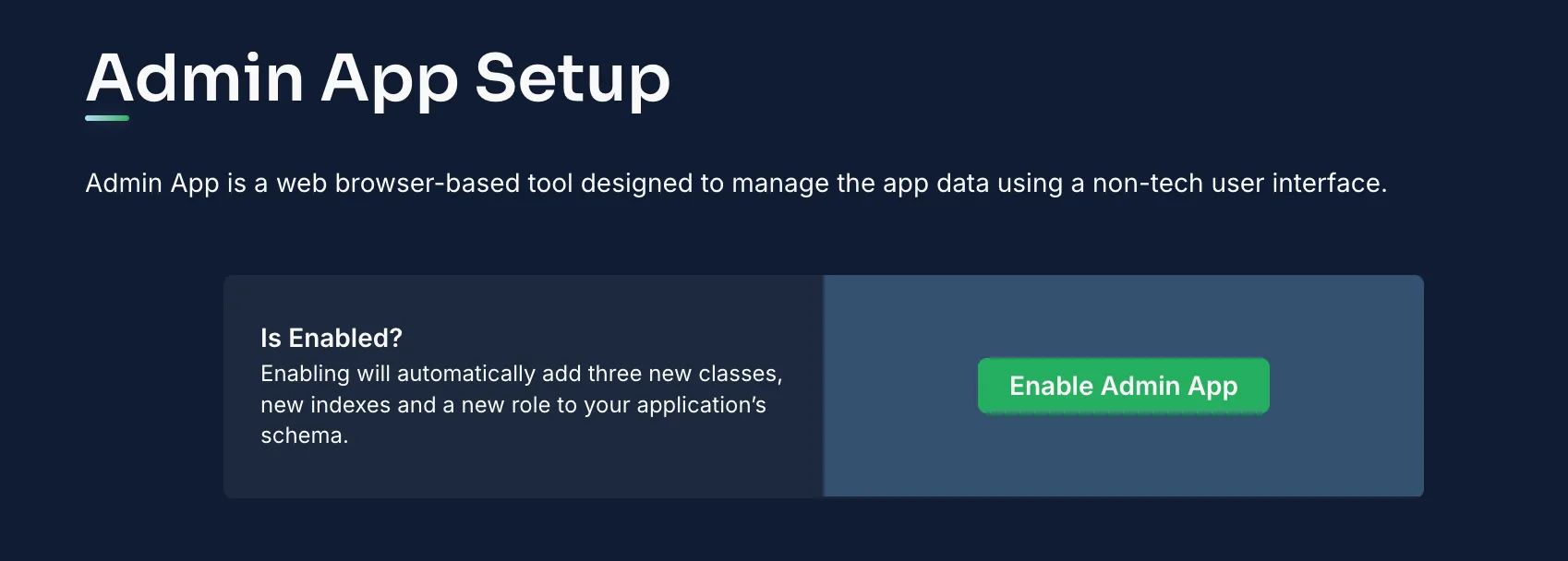
After activation, sign in to the Admin App to manage your backend data.
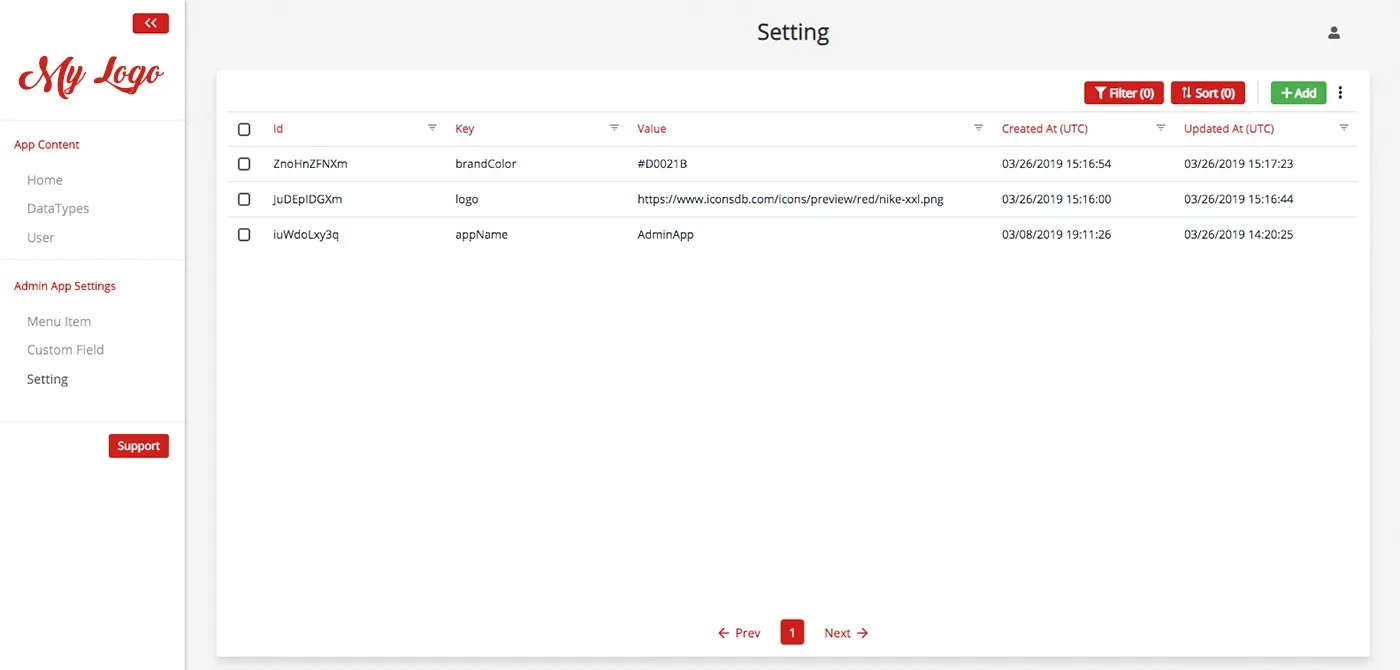
Inside the Admin App, you can:
- Add Records: Use the “Add Record” button in any collection (e.g., Items) to create new entries.
- View/Modify Records: Click on a record to inspect its details or to edit its fields.
- Remove Records: Utilize the delete function to eliminate data that is no longer needed.
This interface greatly enhances usability by streamlining all CRUD functions.
With your backend configured via the Admin App, it’s time to link your Polymer frontend to Back4app.
We will use REST or GraphQL APIs to perform CRUD operations. For example, to retrieve items using REST:
Integrate similar API calls into your Polymer elements as required.
Safeguard your data by applying ACLs to objects. For instance, to create a restricted item:
Within the Back4app dashboard, set up CLPs for each collection to define default access rules. This configuration ensures only authorized users can access sensitive data.
Back4app uses Parse’s User class to manage authentication. In your Polymer project, implement user sign-up and login as demonstrated below:
A similar approach can be adopted for login and session management, with additional features like email verification and password reset configured through the Back4app dashboard.
Back4app’s Web Deployment feature lets you host your Polymer application seamlessly by linking your GitHub repository. Follow these steps to deploy your app.
- Open your project directory in a terminal.
Execute the build command:
Bash1polymer buildThis command generates a build folder with all optimized static files.
- Check the Build: Ensure that the build folder contains an index.html file along with necessary asset directories.
Your repository should contain the complete source code for your Polymer frontend. A sample directory structure might look like:
Initialize a Git repository (if not already done):
Bash1git initStage your files:
Bash1git add .Commit your changes:
Bash1git commit -m "Initial commit for Polymer frontend"- Create a GitHub repository: Name it Basic-CRUD-App-Polymer-Frontend.
Push your code to GitHub:
Bash1git remote add origin https://github.com/your-username/Basic-CRUD-App-Polymer-Frontend.git 2git push -u origin main
- Access Web Deployment: Sign in to Back4app, navigate to your project (Basic-CRUD-App-Polymer), and select the Web Deployment feature.
- Integrate GitHub: Follow the prompts to connect your GitHub account, allowing Back4app to access your repository.
- Select Your Repository and Branch: Choose the repository (e.g., Basic-CRUD-App-Polymer-Frontend) and the appropriate branch (e.g., main).
Specify the following details:
- Build Command: If the build folder is not pre-built, set the command (e.g., polymer build). Back4app will execute this during deployment.
- Output Directory: Set it to build so that Back4app identifies your static site files.
- Environment Variables: Include any necessary variables (such as API keys) in the deployment configuration.
If Docker is your deployment choice, include a Dockerfile in your repository similar to:
Integrate this Dockerfile in your project and select Docker as the deployment option in Back4app.
- Click the Deploy Button: Once your settings are confirmed, hit Deploy.
- Watch the Build Process: Back4app will fetch your code, run the build command, and deploy your containerized app.
- Retrieve Your URL: After deployment, you will receive a URL where your Polymer application is accessible.
- Visit the URL: Open the provided link in your browser.
- Verify Functionality: Check that all routes load correctly and that assets like CSS, JavaScript, and images display as expected.
- Troubleshoot: If any issues occur, review the deployment logs and GitHub integration settings on Back4app.
Great job! You have successfully built a complete CRUD application using Polymer and Back4app.
Your project, Basic-CRUD-App-Polymer, now features well-defined collections for Items and Users, managed seamlessly through the Admin App, with a secure and integrated Polymer frontend.
Next Steps:
- Enhance the Frontend: Add features like detailed item views, search functionality, or real-time updates.
- Expand Functionality: Integrate additional backend logic with Cloud Functions or third-party APIs.
- Explore More: Check out the Back4app documentation for more advanced configurations and performance optimizations.
With these skills, you’re well-equipped to build scalable CRUD backends and deploy robust web applications with Polymer and Back4app. Happy coding!
